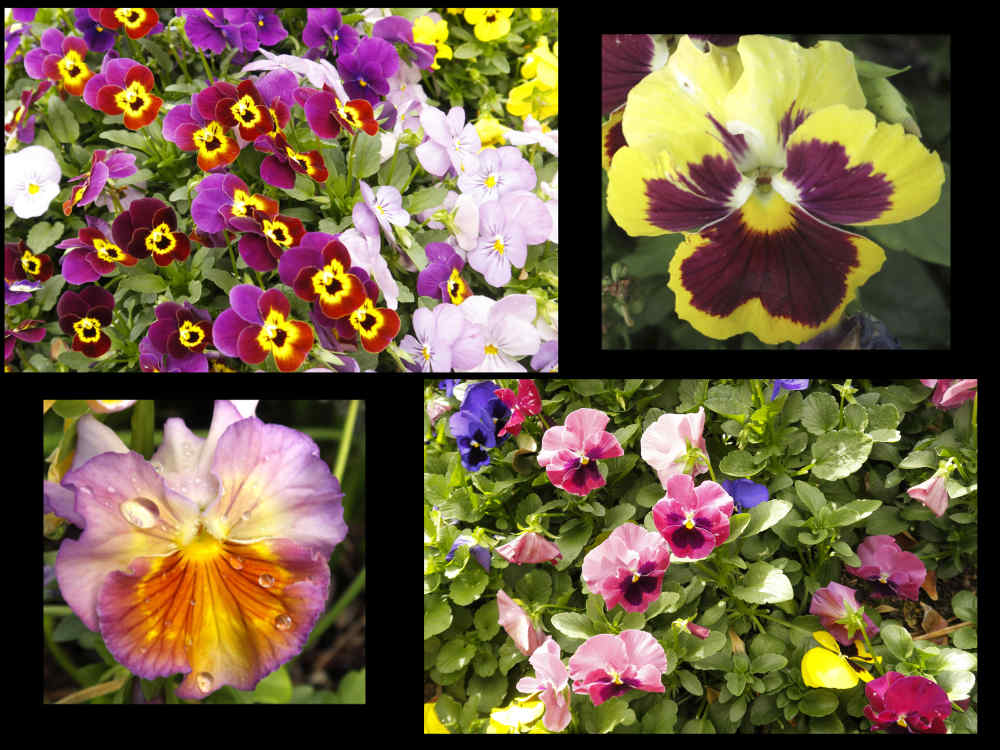Violaceae.
The violet and pansy family has around 26 genera (21 to 34) with around 940 species (800 to 1100).
The Viola genus, with around 500 species accounts for nearly half of the total.
The family been been variously divided into subfamilies, tribes or clades.
Australia has 3 to 5 genera with up to 26 species.
Violas are extensively used as garden plants and also in the manufacture of perfumes.
Most are herbs but there are also small shrubs and trees plus a few vines and lianas.
Many of the herbs are perennials that flower in the second year but cultivars now flower in the first year.
Some tend to become straggly and most are used as annuals.
They may have taproots, stolons (above ground horizontal stems that root) or rhizomes (underground stems).
Some have a persistent woody base or caudex.
The up to 20 mainly unbranched stems can be erect, prostrate, climbing or trailing.
Simple hairs are seen in some species.
Leaves are mostly alternately arranged in a spiral with a few species having opposite leaves.
They commonly form a basal rosette but may be attached slong stem or directly to the rhizome.
There may be a petiole or the blade may be attached to the stem (sessile).
There are typically 2 small leaf-like stipules.
The leaf blades are mostly simple but may be dissected.
They may be linear, round or cordate with a smooth, toothed or lobed edge.
Terminal or axillary inflorescences can be a solitary flower or a few in a spike, head or panicle.
There are usually 2 bracteoles on the peduncle.
The nodding flowers are mostly bilaterally symmetric (zygomorphic) but some are radially symmetric (actinomorphic).
Most species are bisexual but others may be unisexual on separate plants.
Most are cross pollinated when the flowers are fully opened (chasmogamous).
Some flowers never open and are self-pollinated (cleistogamous).
This can result in fertile seeds that give rise to clonal plants.
Some species are dimorphic having both normal and cleistogamous flowers that open at different times.
The 5 overlapping sepals in the calyx are usually free but are sometimes joined at the base.
They may be similar or of unequal lengths.
They may have a short lobe, spur or appendage at the base e.g. Viola.
The sepals usually persist on the fruit.
The 5 free, overlapping petals alternate with the sepals.
They may or may not have a claw base.
There are 2 upper or posterior petals and 2 lateral ones.
In zygomorphic flowers the lower or anterior petal is often larger.
Its base is usually elongated into a long or short spur.
The 5 stamens are opposite the sepals and alternate with the petals.
They are on short wide filaments that have hairs down both sides.
The filaments may be free or partly to wholly joined forming a tube around the ovary (adelphous).
The anthers may be free, touching, slightly stuck together or fused.
The anthers have 2 pollen sacs that open inwards via longitudinal slits.
The connective tissue between the 2 sacs is usually extended to form a prominent appendage.
In zygomorphic flowers the lower or anterior pair of stamens have a basal nectar containing spur that
extends into the spur of the anterior petal.
The roughly ovoid, superior ovary is formed from 3 (2 to 5) fused carpels.
It has 1 locule with 3 (2 to 5) parietal placentas each with 1 to many ovules.
The mostly single, sometimes curved style may be thicker at the top.
The papillate stigma is of various shapes and sometimes has hairs.
The fruit are almost allways a loculicidal capsule with a few being berries or nuts.
The capsules split into 3 keeled or ridged valves.
The valves may be contractile with the capsules opening explosively.
The one to many seeds are hard, spherical to ovoid or occasionally flattened.
They are usually smooth and in a few species they are winged.
They often have an aril (a fleshy thickening near the point of attachment).
J.F.


